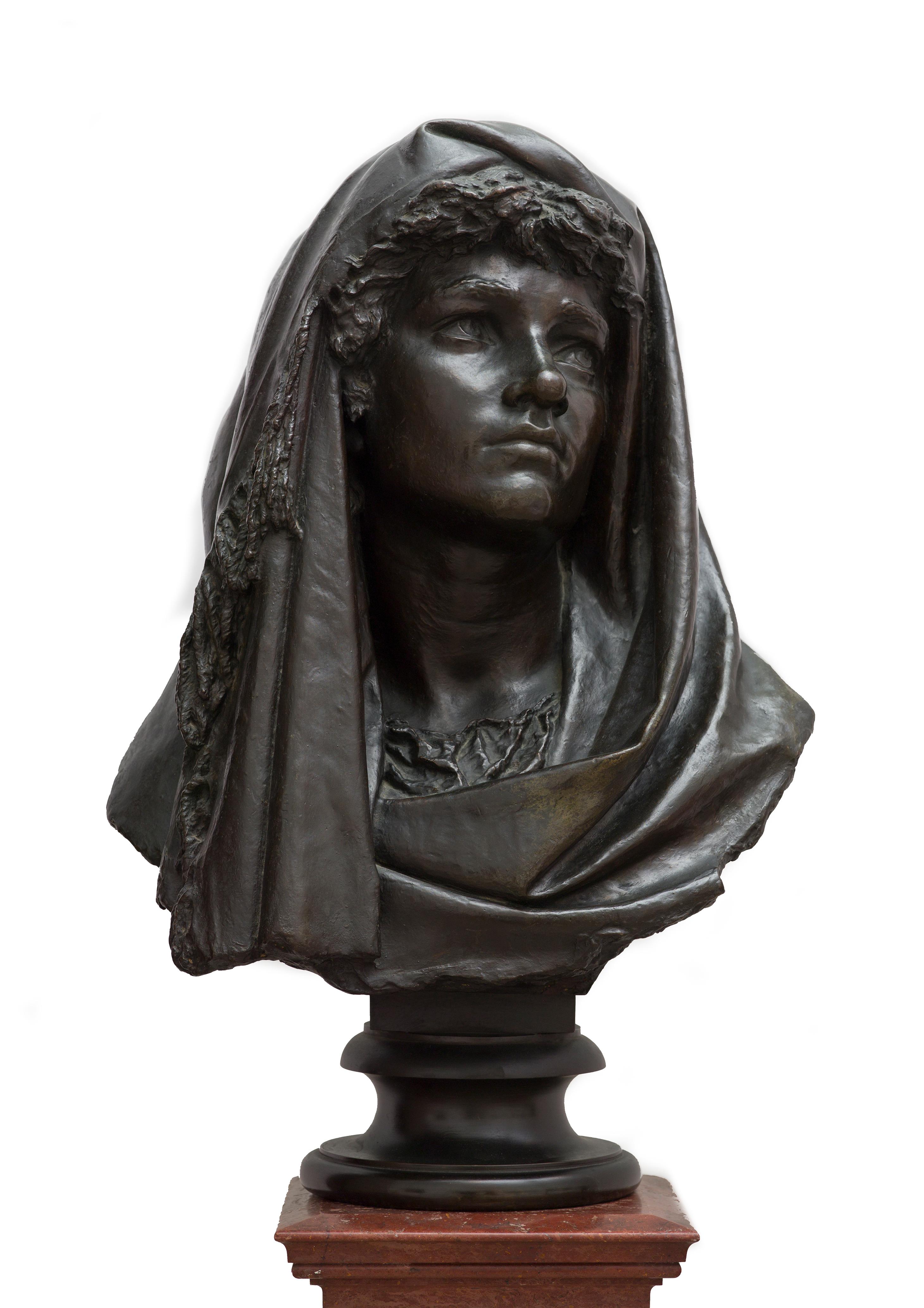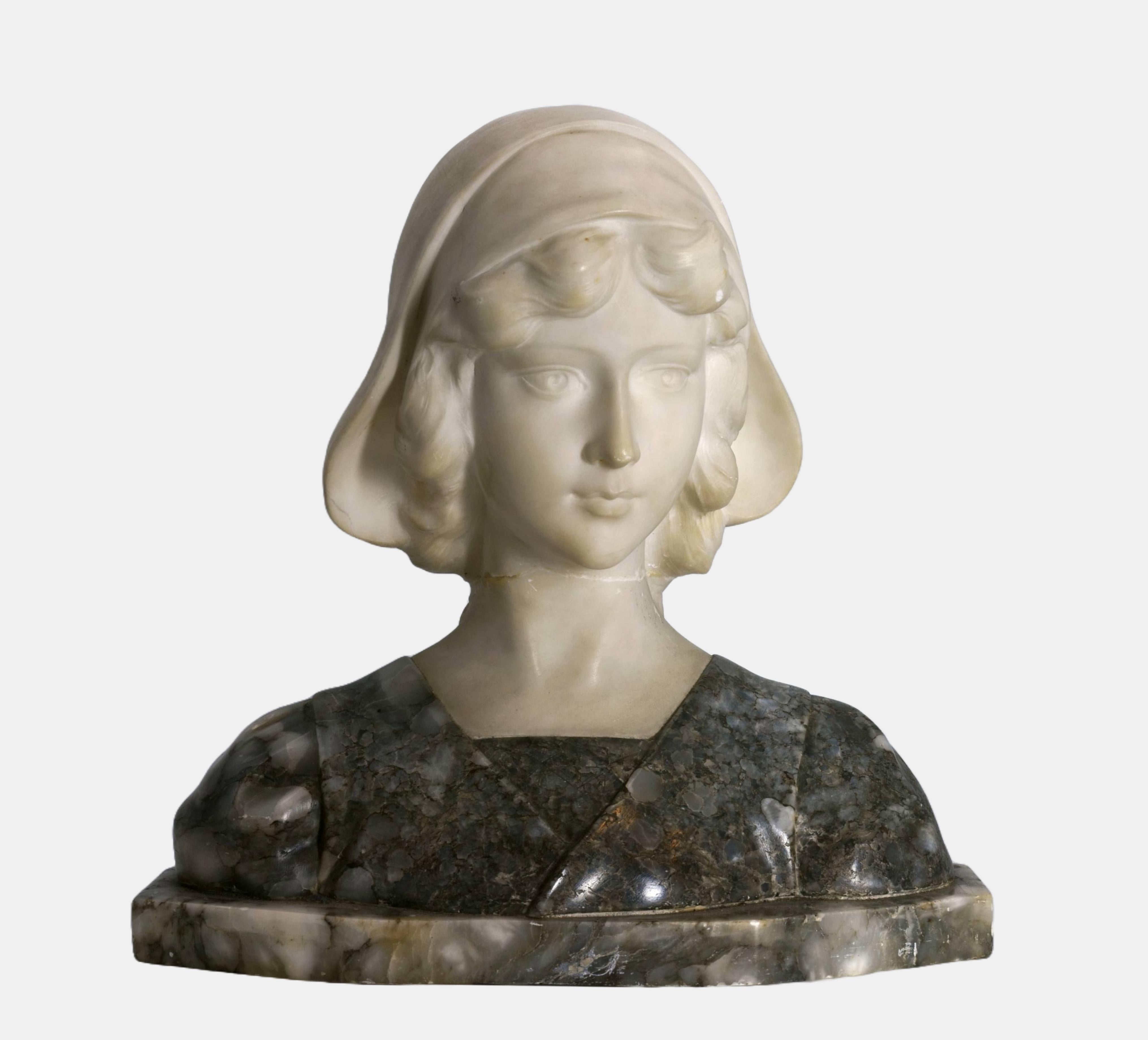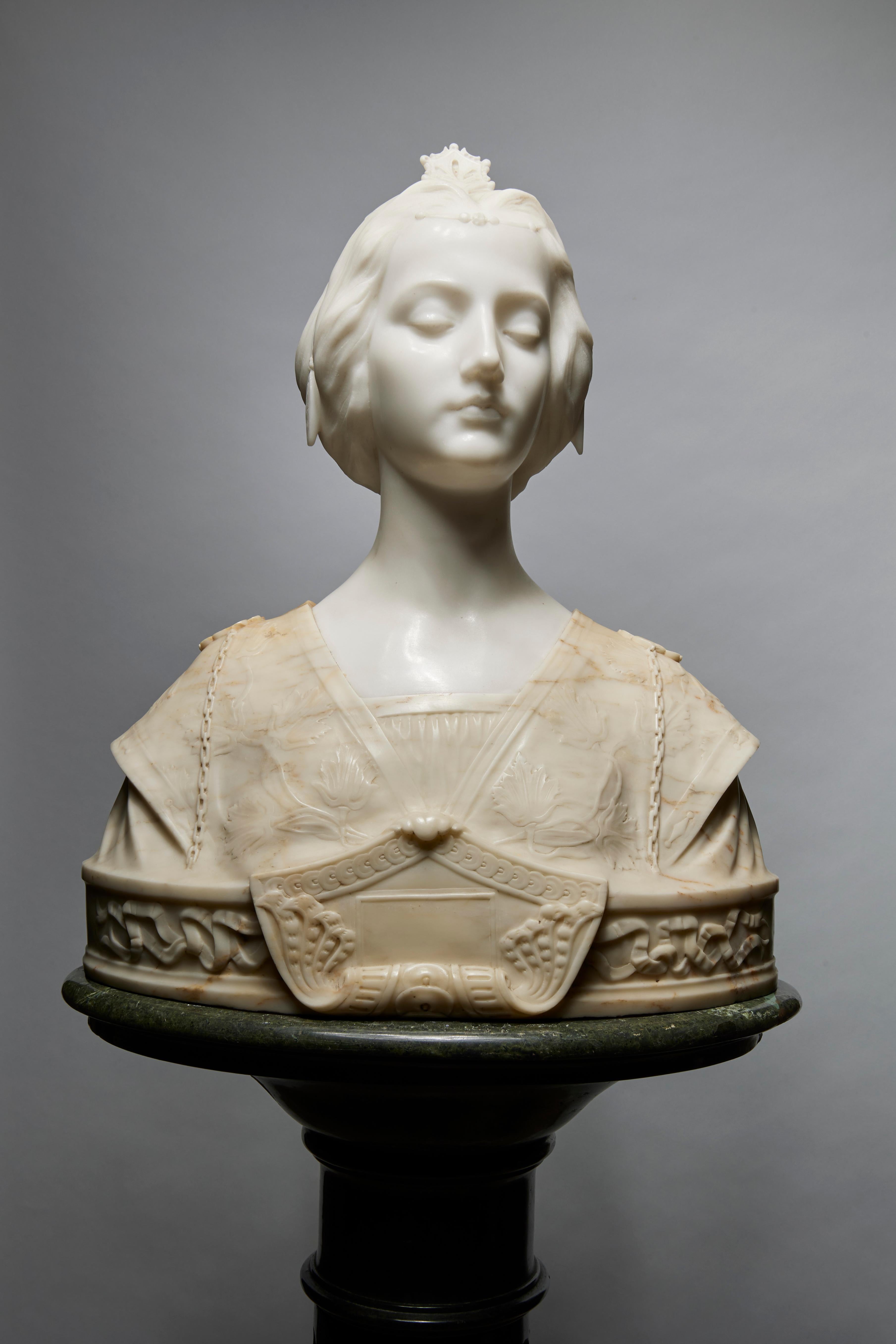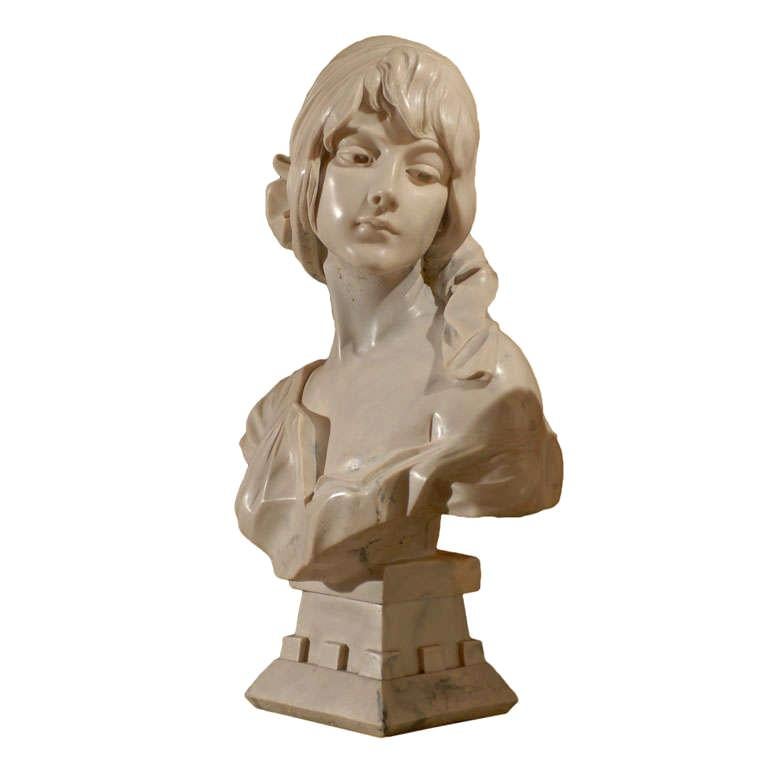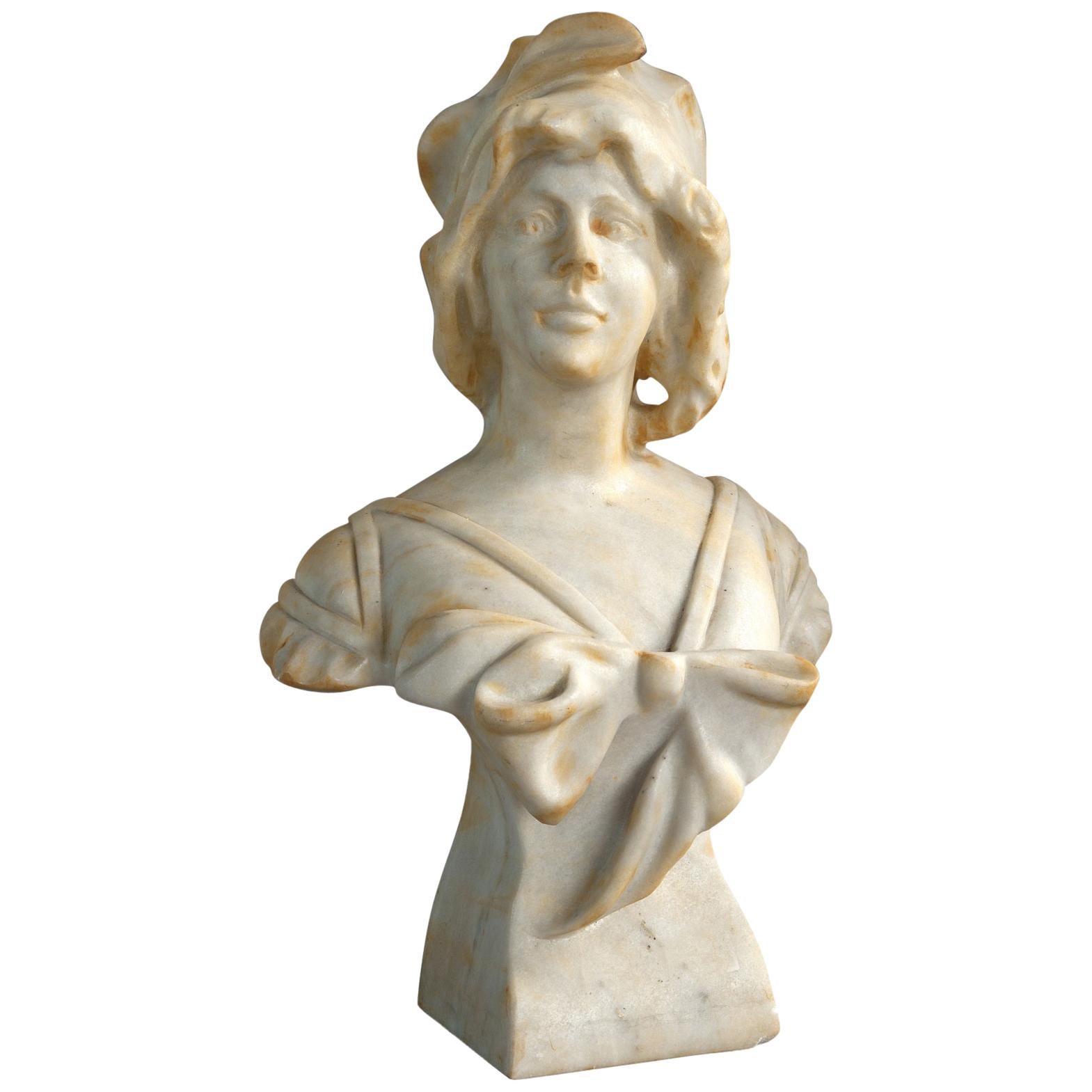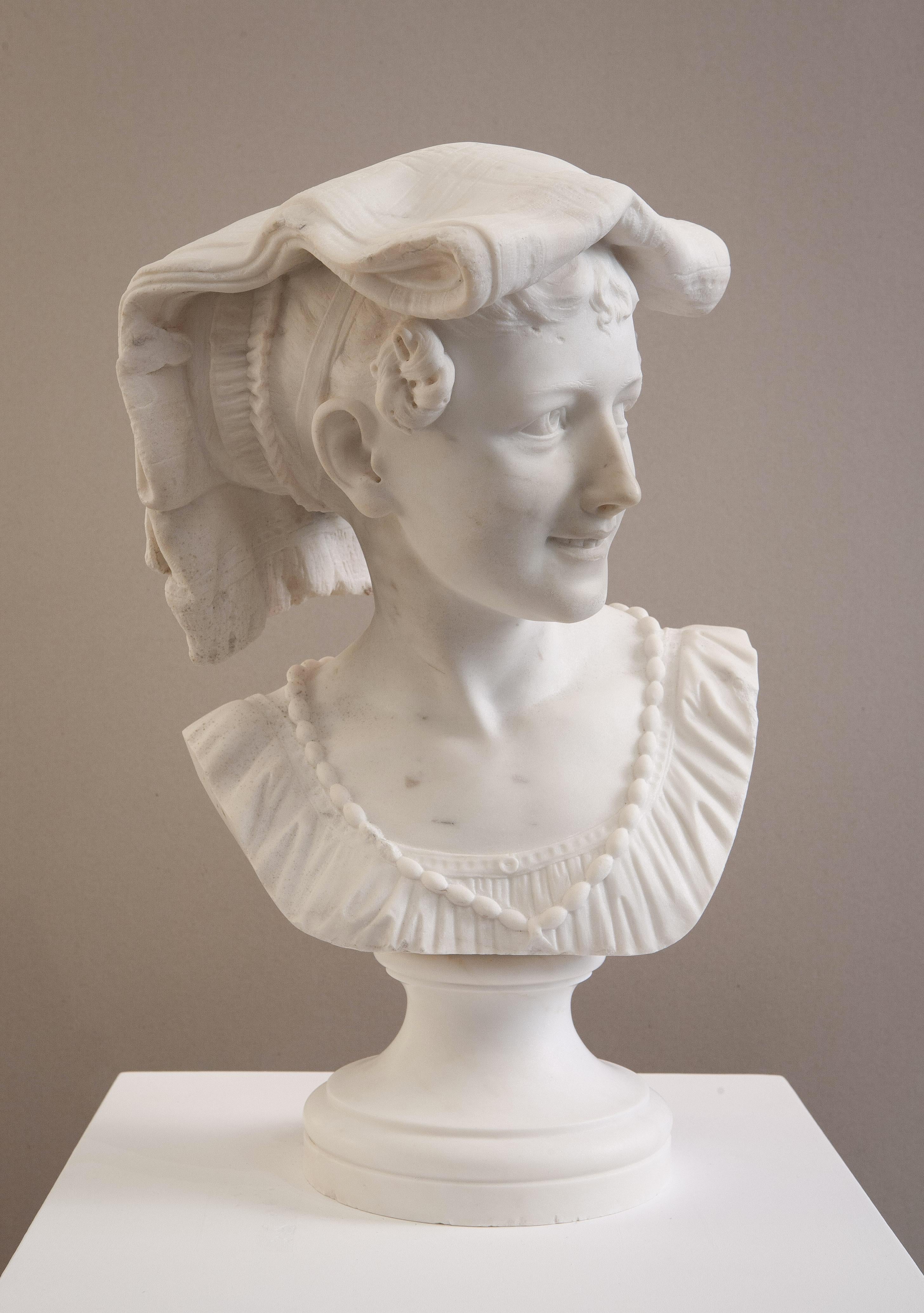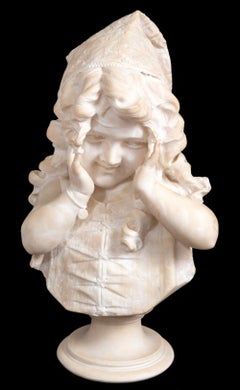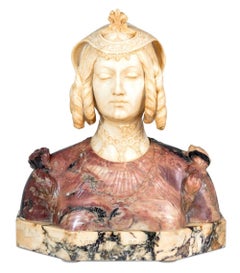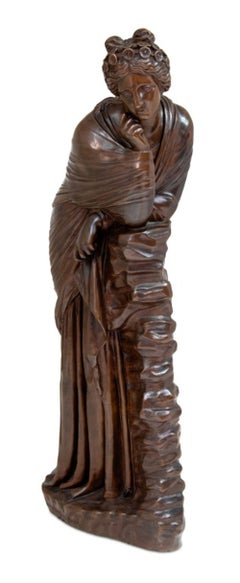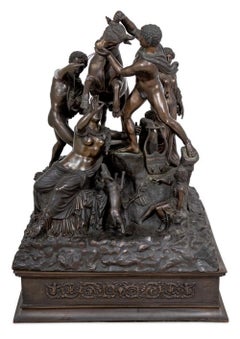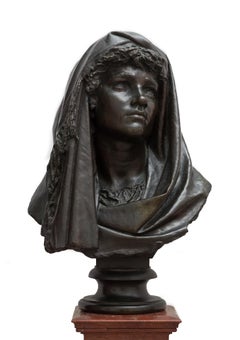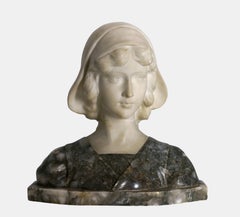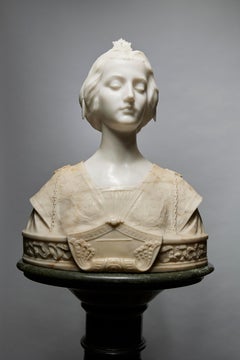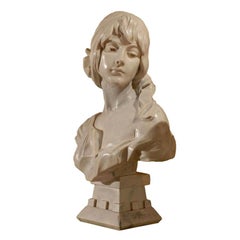Items Similar to Female Figure Bust
Want more images or videos?
Request additional images or videos from the seller
1 of 6
UnknownFemale Figure BustLate 19th Century
Late 19th Century
$3,250
£2,450.51
€2,834.37
CA$4,598.08
A$5,012.91
CHF 2,648.72
MX$61,647
NOK 32,934.76
SEK 31,003.71
DKK 21,159.10
About the Item
Italian School Female Figure Carved Alabaster Bust, late 19th century, the portrait with tied back hair and flowing dress tied at her breast, on a rockwork plinth, unsigned. 26" H x 16" W x 8" D.
- Creation Year:Late 19th Century
- Dimensions:Height: 26 in (66.04 cm)Width: 16 in (40.64 cm)Depth: 8 in (20.32 cm)
- Medium:
- Movement & Style:
- Period:
- Condition:Overall good vintage condition commensurate with age and wear, minor scuffs and scratches.
- Gallery Location:Astoria, NY
- Reference Number:Seller: 1142251stDibs: LU2845216294892
About the Seller
No Reviews Yet
Vetted Professional Seller
Every seller passes strict standards for authenticity and reliability
1stDibs seller since 2025
8 sales on 1stDibs
Typical response time: 12 hours
- ShippingRetrieving quote...Shipping from: Astoria, NY
- Return Policy
Authenticity Guarantee
In the unlikely event there’s an issue with an item’s authenticity, contact us within 1 year for a full refund. DetailsMoney-Back Guarantee
If your item is not as described, is damaged in transit, or does not arrive, contact us within 7 days for a full refund. Details24-Hour Cancellation
You have a 24-hour grace period in which to reconsider your purchase, with no questions asked.Vetted Professional Sellers
Our world-class sellers must adhere to strict standards for service and quality, maintaining the integrity of our listings.Price-Match Guarantee
If you find that a seller listed the same item for a lower price elsewhere, we’ll match it.Trusted Global Delivery
Our best-in-class carrier network provides specialized shipping options worldwide, including custom delivery.More From This Seller
View AllNeapolitan Girl
By Emilio Fiaschi
Located in Astoria, NY
Emilio Fiaschi (Italian, 1858-1941) Neapolitan Girl Alabaster Bust, late 19th century, depicting a young girl hiding her face behind her hands, on a socle, signed "E Fiaschi" to back...
Category
Late 19th Century Italian School Figurative Sculptures
Materials
Alabaster
"Violante Beatrice of Bavaria"
Located in Astoria, NY
Aristide Petrilli (Italian, 1868-1930) "Violante Beatrice of Bavaria" Alabaster Bust, late 19th century, the bust on an angular plinth, signed and titled. 17" H x 16" W x 7" D.
Category
Late 19th Century Italian School Figurative Sculptures
Materials
Alabaster
"Sapphos"
Located in Astoria, NY
After Edouard Henri Delesalle (French, 1823-1851) "Sapphos" Patinated Bronze Sculpture, late 19th century, impressed to base "F. Barbedienne, fondeur" and "Reduction Mecanique A. Col...
Category
Late 19th Century French School Figurative Sculptures
Materials
Bronze
After Pietro da Barga "Farnese Bull" Bronze
Located in Astoria, NY
After Pietro da Barga (Italian, Rome, active c. 1574-1588) "Farnese Bull" Patinated Bronze Sculpture, late 19th century, depicting Antiope directing her sons Amphion and Zethus attac...
Category
Late 19th Century Figurative Sculptures
Materials
Bronze
$6,400 Sale Price
24% Off
"Geisha"
Located in Astoria, NY
Alfred Desire Lanson (French, 1851-1898) "Geisha" Patinated Bronze Sculpture, late 19th century, cast by Casse & Delpy edit. foundry, the figure standing on a circular base, signed. ...
Category
Late 19th Century Figurative Sculptures
Materials
Bronze
Émile Louis Picault Bronze Sculpture
By Émile Louis Picault
Located in Astoria, NY
Emile Louis Picault (French, 1833-1915) "Paris" Patinated Bronze Sculpture, late 19th century, the standing figure holding a golden apple, signed to base. 32" H x 12" W x 12" D. The ...
Category
Late 19th Century Art Nouveau Figurative Sculptures
Materials
Bronze
You May Also Like
Bust of veiled woman
Located in Roma, RM
Giulio Tadolini ( Rome 1849 - 1918 ) ( attr. to ), Bust of veiled woman
Bronze 61 x 37 x 22 cm.
Category
Late 19th Century Academic Figurative Sculptures
Materials
Bronze
$5,368
Bust of a young woman / - Beauty of youth -
Located in Berlin, DE
Anonymous, Bust of a young woman, c. 1900, artificial marble and gray onyx marble. 37 cm (height) x 37 cm (width) x 22 cm (depth), weight 17.2 kg. Signed “GURRINI” on the reverse.
-...
Category
Early 1900s Realist Figurative Sculptures
Materials
Marble
$907 Sale Price
20% Off
Late 19th Century Italian Finely Finished Bust of Renaissance Lady w/ Pedestal
Located in Beachwood, OH
Italian, Late 19th Century
Finely Finished Bust of Renaissance Lady
White marble, garment in veined buff colored marble on fitted green marble pedestal
Bust: 22 x 18 x 9 inches
Pedes...
Category
Late 19th Century Figurative Sculptures
Materials
Marble
Hand Carved Marble Bust of Female
Located in Atlanta, GA
Beautiful hand carved marble bust of a young girl
DIMENSIONS: H 25 in. x Dm 15 in.
H 63.5 cm x Dm 38.1 cm
CW3389
Category
Early 20th Century French Busts
Materials
Marble
Marble Bust, 20th Century
Located in Madrid, ES
Female bust marble, 20th century.
Bust with base made of carved marble that shows a young lady with a treatment that recalls in some details modernist works from the beginning of th...
Category
20th Century European Other Busts
Materials
Marble
Le Rieuse napolitain
Located in Como, IT
Scultore attivo probabilmente in Francia alla fine del XIX secolo.
La scultura raffigura un soggetto particolarmente famoso di Jean-Baptiste Carpeaux (1827-1875), intitolato "Le Rieu...
Category
Late 19th Century Figurative Sculptures
Materials
Marble
$4,175
More Ways To Browse
Antique Figure Sculpture
Tie Back
Antique Tie Back
19th Century Alabaster Sculpture
Antique Alabaster Bust
Alabaster Figure
Carved Alabaster Busts
Italian Female Bust
Cafe Florian
Canoe Paddle Africa
Cesar Thumb
Charna Rickey On Sale
Chen Si
Chola Bronze
Chris Fraticelli
Christopher David White
Clark Bronson
Contemporary Art W Swimmers
